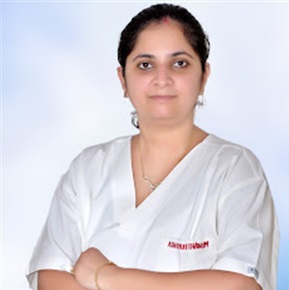Endometriosis and pregnancy are two inter-related health conditions that millions of women of child bearing age struggle with every year. The simple fact is endometriosis can and will make conceiving a child more difficult in most instances. This does not mean a woman cannot get pregnant but it can throw a monkey wrench in the process.
Exactly how endometriosis affects a woman's chance at pregnancy is not fully known but studies that have been conducted into the issue show that she is less likely to conceive then a woman who does not suffer from this disease. These studies have shown that about twenty percent of women with endometriosis will be unable to conceive and that of all infertile women twenty one to forty four percent have this disease.
What isn't known is why endometriosis affects a woman's ability to conceive a child. Is it the endometriosis itself or is there something else at work in conjunction with it. It does not mean that a woman cannot successfully conceive a child and carry it to term. Best Gynecologist in Kota
The path to getting pregnant for women with endometriosis varies. Many women get pregnant naturally without any outside medical help. For women who are struggling with endometriosis and pregnancy it is important that they talk with their doctor /gynecologist about medical interventions that may help increase their chances of conceiving a child.
Women with endometriosis who are trying to get pregnant naturally may increase their odds if they consider the following:
1. Get started early in life - Studies have shown that women in their twenties are more likely to get pregnant then women in their thirties and older. Since endometriosis is shown to interfere with a woman's fertility it is surmised that it will continue to make conceiving harder the older she gets.
2. Get healthy - Many women have success in managing their condition when eating an endometriosis diet. A healthy diet, combined with regular exercise, can help minimize the effects of endometrial growths and provides her body with the necessary nutrients to successfully nourish an embryo.
If after a period of six months to a year a woman has still not gotten pregnant naturally she can turn to her gynecologist or infertility specialist for help. There are several treatment or procedure options available to help increase the chance for a successful pregnancy.
1. Laparoscopic endometriosis surgery - This minimally invasive surgical procedure is done to not only definitively diagnose endometriosis but also to excise and remove endometrial growths from the abdominal organs. This type of surgery is not a cure but it can provide a window in which a woman can successfully conceive. Studies do indicate that laparoscopic surgery can increase the likely hood of a successful pregnancy. Laparoscopic Gynecologist in Kota
2. Fertility drugs - The use of drugs such as Clomid and Serophene can help stimulate ovulation in women who are having difficulty conceiving.
3. In Vitro Fertilization (IVF) - IVF is an assisted reproductive technique that has shown good results in women with endometriosis and pregnancy issues. It should be noted that the success rate of IVF for women with endometriosis is about half that of other women with infertility issues. A newer technique called intracytoplasmatic sperm injection seems to garner higher success rates with studies showing that success rates are equal among women with the disease and those without.
There are risk factors for pregnant women with endometriosis that can lead to serious complications during their pregnancy. A recent study by medical researchers in Sweden found that women with endometriosis are at a higher risk for the following:
1. Premature Birth -Women with endometriosis are at higher risk for having their baby's preterm. They also found that women who also underwent IVF procedures to become pregnant were at an even greater risk for preterm birth then women who did not.
2. Preeclampsia - This is high blood pressure that develops in pregnant women during their second and third trimester. Women with endometriosis are at a higher risk for developing this dangerous condition that also includes protein in their urine and an increased risk for post birth.
3. Caesarean Section - In the study it was found that almost twice as many women with endometriosis had their babies delivered via C-section. It was also discovered that these women had a higher incidence of induced premature birth then spontaneous premature birth. The exact why of this is not known but the researchers conducting the study have theorized that complications with the placenta may be at the root of it.





Comments